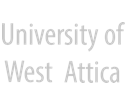Removal of chromium from waste water with the help of microbes: a review
Abstract
Chromium VI (CrVI) is one of the highly toxic heavy metals. It is widely used in a number of industries like metallurgical, electroplating, paints, pigments, inks, fungicides and photography. It enters into the natural water bodies through the industrial effluents creating water pollution. In trace amounts it is useful for some of the metabolic activities like glucose, lipid, aminoacids and nucleic acid. However at higher concentration it becomes toxic for microbes, plants and humanbeings and causes a number of serious diseases. Therefore its removal from waste water is considered to be very important. In the present article chromium removal from waste water using bacteria by biosorption, reduction and transport was reviewed. Published literature suggests that immobilized, free and living cells, their extracellular metabolites even dead bacterial biomass play an important role in chromium removal from waste water. Reduction of Cr (VI) is one of the important mechanisms for its detoxification from waste water.It was shown by the work published so far that chromium reduction was carried out by aerobic and anaerobic bacteria and iron and sulphate reducing bacteria. pH inside the bacterial cells plays an important role in the reduction of Cr (VI). Review of literature suggests that different factors like pH, temperature, redox potential and presence of other metals play an important role in the removal of Cr (VI) from waste water using bacteria. We have carried out work in our laboratory on Cr (VI) uptake from waste water by Bacillus mycoides and the results
obtained are also discussed in this communication
Keywords
DOI: 10.26265/e-jst.v3i3.590
Refbacks
- There are currently no refbacks.






